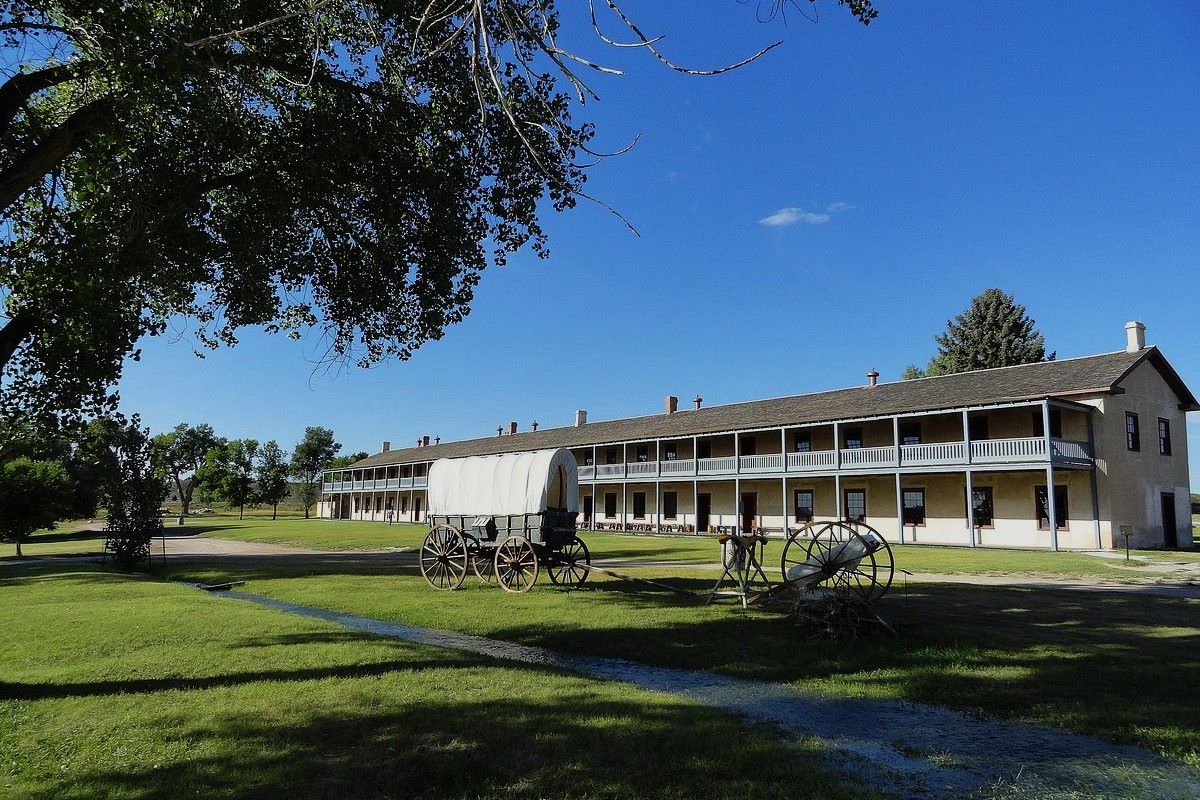Mysteries Of Fort Laramie’s Trading Paths

Fort Laramie, a place rich in history, holds secrets of the past waiting to be told. This historic site in Wyoming was once a bustling hub for traders, trappers, and travelers. Imagine the stories shared around campfires, the deals made, and the friendships formed. Fort Laramie served as a vital stop along the Oregon Trail, where pioneers rested and resupplied. Its walls witnessed the meeting of cultures, as Native Americans and settlers crossed paths. Today, visitors can wander through the fort's remnants, feeling the echoes of history. Whether you're a history buff or just curious, Fort Laramie offers a glimpse into a time when the West was wild and untamed. Come and see what made this place a cornerstone of the American frontier.
Unraveling the Trading Paths of Fort Laramie
Fort Laramie, a historic gem in Wyoming, holds secrets of the past. Once a bustling hub for traders, trappers, and travelers, this fort played a pivotal role in shaping the American West. Let's journey through some of the most intriguing trading paths that connected Fort Laramie to the wider world.
The Oregon Trail
The Oregon Trail was a lifeline for pioneers seeking new beginnings. This path stretched over 2,000 miles, guiding settlers from Missouri to the fertile lands of Oregon.
Chimney Rock: A towering natural landmark, Chimney Rock served as a guidepost for weary travelers. Its unique shape made it an unforgettable sight on the trail.
Scotts Bluff: This massive rock formation offered a breathtaking view of the surrounding plains. It was a critical checkpoint for those heading west.
Fort Kearny: Established to protect pioneers, Fort Kearny provided supplies and a sense of security on the long journey.
The Mormon Trail
The Mormon Trail was a path of faith and perseverance. Thousands of Latter-day Saints traveled this route in search of religious freedom.
Independence Rock: Known as the "Register of the Desert," travelers carved their names into this granite monolith, leaving a lasting legacy.
Devil's Gate: A narrow gorge carved by the Sweetwater River, Devil's Gate was both a natural wonder and a challenge for those passing through.
Fort Bridger: A vital resupply point, Fort Bridger offered much-needed provisions and rest for the weary travelers.
The Bozeman Trail
The Bozeman Trail was a shortcut to the gold fields of Montana. Though shorter, it was fraught with danger and conflict.
Fort Reno: Built to protect travelers, Fort Reno was a military outpost that witnessed many skirmishes with Native American tribes.
Crazy Woman Crossing: This treacherous river crossing tested the courage and skill of those brave enough to attempt it.
Fort Phil Kearny: Known for its role in the Red Cloud's War, Fort Phil Kearny was a flashpoint in the struggle between settlers and Native Americans.
The Santa Fe Trail
The Santa Fe Trail connected Missouri to Santa Fe, New Mexico. It was a vital trade route for goods and cultural exchange.
Bent's Fort: A bustling trading post, Bent's Fort was a melting pot of cultures, where traders, trappers, and Native Americans exchanged goods and stories.
Raton Pass: A challenging mountain pass, Raton Pass tested the endurance of traders and their wagons.
Fort Union: A military post and supply depot, Fort Union played a crucial role in maintaining the flow of goods along the trail.
The Pony Express Route
The Pony Express was a daring venture that revolutionized communication. Riders braved harsh conditions to deliver mail across the country.
Fort Laramie Station: A key stop on the Pony Express route, Fort Laramie Station was a place of rest and resupply for the intrepid riders.
Sweetwater River: Riders followed the Sweetwater River, a natural guide through the rugged terrain.
South Pass: A crucial mountain pass, South Pass allowed riders to cross the Continental Divide with relative ease.
Reflecting on Fort Laramie's Trading Paths
Fort Laramie's trading paths hold stories of adventure, commerce, and cultural exchange. These routes were more than just trails; they were lifelines connecting different communities and fostering relationships among traders, settlers, and Native American tribes. Walking these paths today, you can almost hear the echoes of bustling markets and the clatter of wagons. The fort itself stands as a testament to the resilience and ingenuity of those who traversed these routes. Visiting Fort Laramie offers a unique glimpse into a time when trade was the heartbeat of the region. Whether you're a history buff or just curious about the past, exploring these paths provides a deeper understanding of the rich tapestry of American history. So next time you find yourself in Wyoming, take a moment to wander these historic trails and imagine the vibrant exchanges that once took place.

